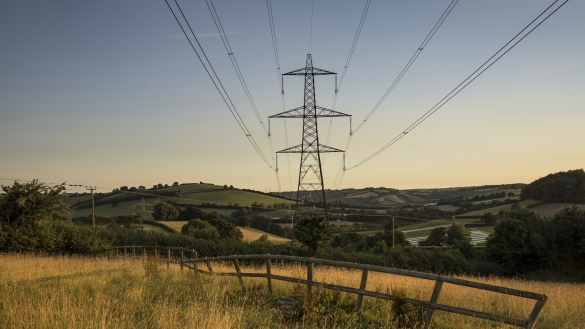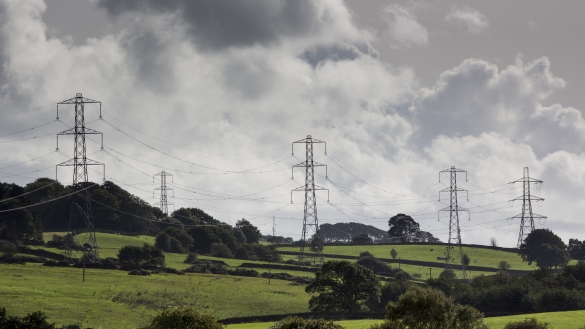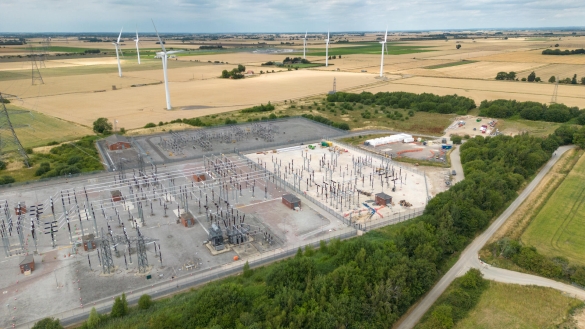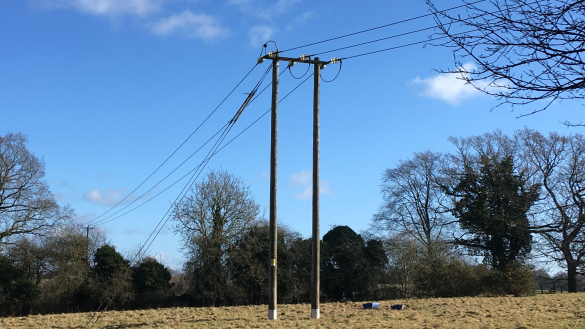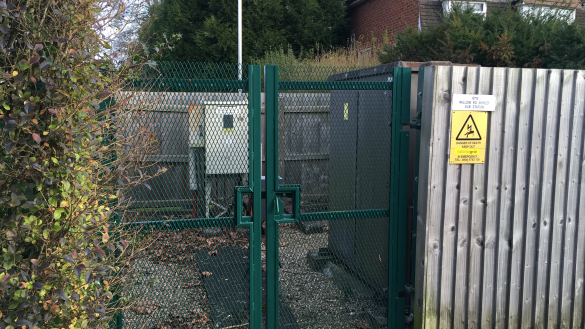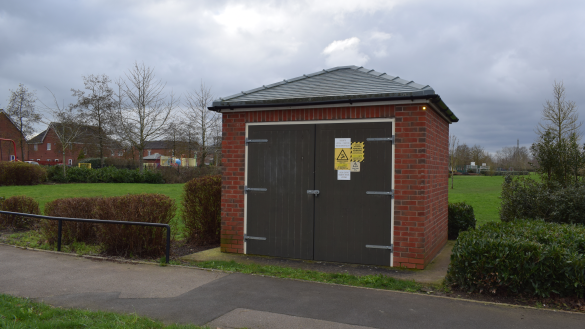Electricity systems and sources
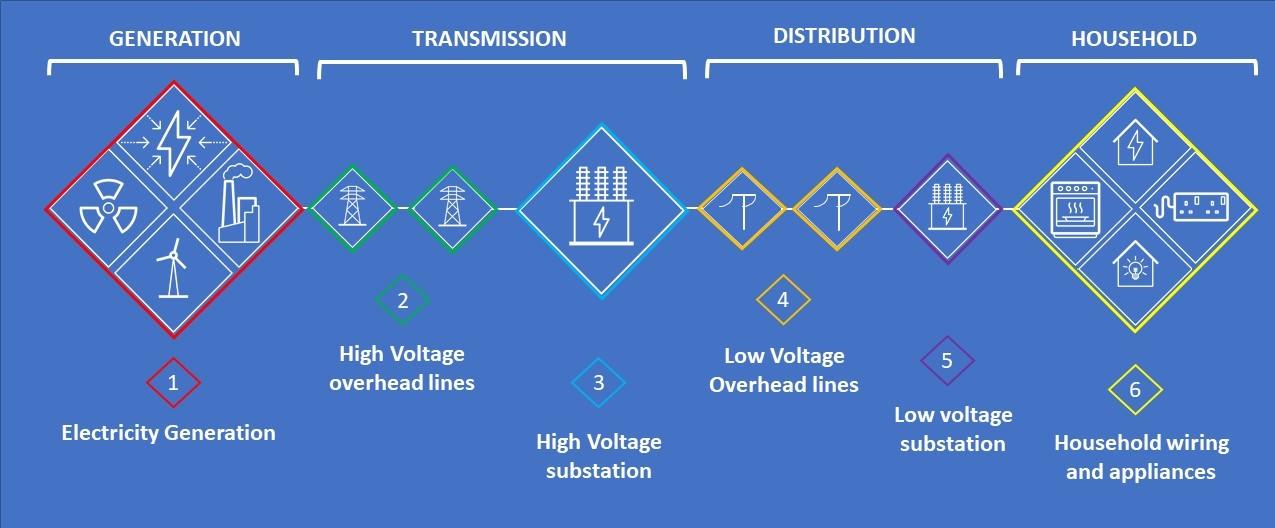
Electricity plays a huge part in our lives. We use it at home, at work, in our schools and hospitals. It helps to bring us light and heat, and it powers the technology we have come to rely on. The journey of electricity is not quite as simple as getting from A to B. There are several stages involved in delivering electricity to you in a way that is efficient and safe. Each of those stages involves different infrastructure, which are described below and includes the EMFs associated with them.
Electricity Generation
These are facilities where electricity is produced. These could include solar, nuclear, coal, wind or biomass plants. In terms of EMF exposure, the generation plant itself is not a significant source of EMFs. The predominant sources will be the overhead lines and cables entering and exiting the site. These can vary in voltage depending on the size of the generating plant. Information about these overhead lines and cables can be found below.
High voltage overhead lines
Electricity is carried around the country on overhead lines at various voltages. High voltage overhead lines operate at either 275 kV or 400 kV and are classed as transmission voltage. These are the highest voltages in the UK.
High voltage substations
A National Grid substation is a large installation where 275 kV and 400 kV overhead lines or underground cables are switched on and off and where electricity is transformed to 132 kV for distribution to surrounding areas. Each substation can be a hundred metres or more across and is surrounded by a metal fence (a few are indoors in suitably large buildings).
Normally, the EMFs from the equipment inside a substation do not extend much if at all beyond the perimeter fence - the field outside the perimeter comes from the overhead lines or underground cables entering or leaving the substation.
Low voltage and local distribution substations
These substations transform electricity from (usually) 11 kV to the supply voltage for homes; 230 V. In urban areas there is one small substation, often no larger than a domestic garage, to every few hundred houses. In rural areas the substations are smaller still, often mounted on poles, and serve just a few homes. There are over 400,000 substations in the UK.
Household wiring and appliances
Normal, correctly functioning household wiring should not be a source of magnetic fields, because wherever there is a current, there should be an equal return current in the same cable, and the magnetic fields cancel each other out. There are exceptions where wiring has faults.
Appliances we use in our homes are also a source of EMF exposure. Mains-powered appliances produce elevated magnetic fields whenever they draw current. Although the magnetic fields at the surface of some appliances can be high, they reduce very quickly with distance. People do not usually spend much time close to appliances, so the exposure is limited.

